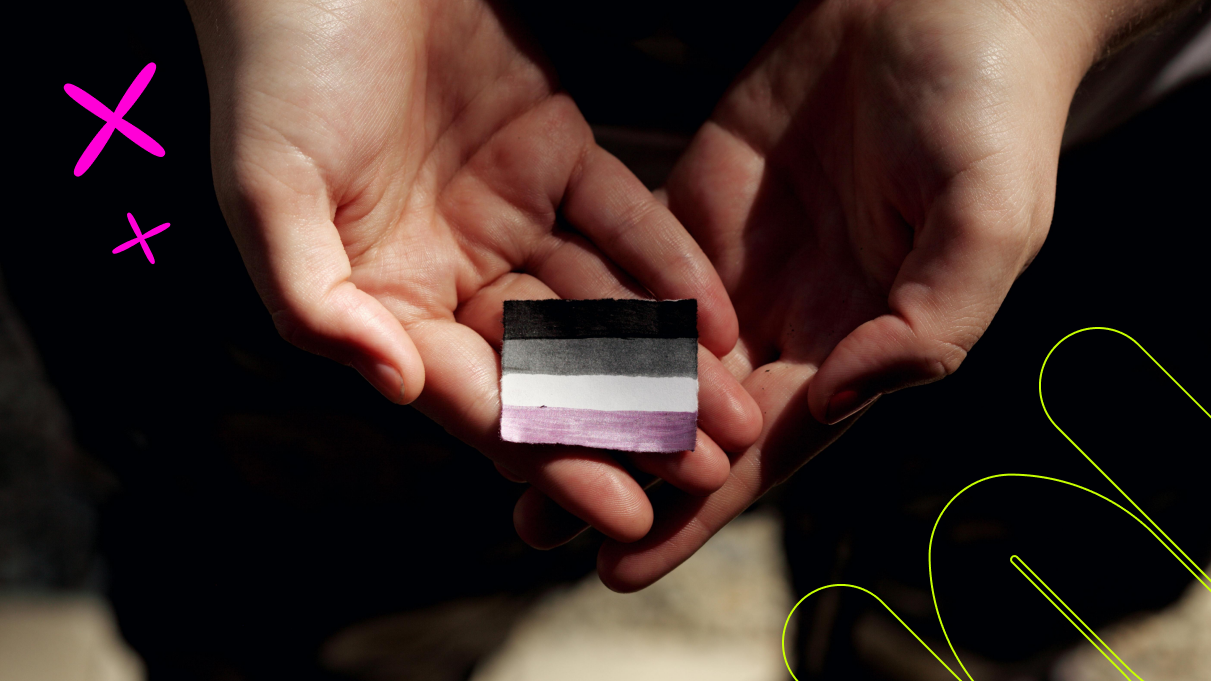As International Asexuality Day (April 6) rolls around, it’s the perfect time to dive into the topic of asexuality, which is often misunderstood or wrapped in myths. First thing’s first: asexuality isn’t about choosing to live a celibate life, nor is it a holding pattern until the 'right' person shows up. Asexual folks experience attractions, just not in a sexual way. Their lives and relationships are as rich and multifaceted as anyone else’s, challenging our usual ideas about attraction and opening up a broader, more inclusive view of human sexuality.
So, what exactly is asexuality? At its core, asexuality is a sexual orientation where someone doesn’t experience sexual attraction to others. This doesn’t mean they lack emotions or the ability to form deep connections; it’s just that sexual attraction isn’t part of their experience. They might still fall in love, appreciate beauty, and have meaningful, lasting relationships—it’s just that the element of sexual desire isn’t in the mix. It’s another piece of the vast puzzle of human diversity, showing that the spectrum of love and attraction is wider than many of us might think.
As April 6 approaches, it's the perfect moment to get the conversation started, tackling the widespread myths and misconceptions surrounding asexuality head-on!
"Asexuality is the same as celibacy"
The misconception that "Asexuality is the same as celibacy" couldn't be further from the truth, and it's crucial to unpack this to understand the distinction. Celibacy is indeed about making a conscious decision to abstain from sexual activities, often for personal, religious, or spiritual reasons. It's a choice, one that can change over time depending on a person’s circumstances or decisions. On the other hand, asexuality is an intrinsic part of who someone is; it's about how a person experiences attraction, not about choosing to abstain from sex.
Asexuality, as a sexual orientation, means that an individual does not experience sexual attraction to others. This doesn't imply they're incapable of love, romance, or deep connections. Many asexual people have romantic relationships, form strong emotional bonds, and experience aesthetic, intellectual, or platonic attractions. Their orientation is about the absence of sexual attraction, not about a decision to refrain from sexual activities.
"Asexuals don’t experience any type of attraction"
In reality, asexual people can—and often do—experience a wide range of attractions; it's just that sexual attraction isn't typically among them. This misconception obscures the beautiful complexity of human connections that extend far beyond the realm of the sexual, encompassing romantic, aesthetic, and emotional dimensions of attraction.
Romantic attraction, for example, is something many asexual individuals experience, leading them to seek out romantic relationships that fulfill emotional and intimate needs without necessarily including a sexual component. This distinction between romantic and sexual attraction is key to understanding asexuality. Someone might identify as aromantic asexual, feeling neither romantic nor sexual attraction, while another might be biromantic asexual, experiencing romantic attraction to multiple genders but not sexual attraction.
"Asexuality is a medical condition"
Asexuality is not a condition, an illness, or something that requires fixing. It is a legitimate sexual orientation, a natural part of the spectrum of human sexuality. This orientation, like others, is about how individuals experience attraction, not about something being 'wrong' or 'abnormal' with them.
Equating asexuality with a medical condition undermines the validity and identity of asexual individuals, suggesting that their experiences are problems that need solutions. However, asexuality is about who a person is at their core; it's an integral aspect of their identity. Just as other orientations do not imply any medical issue, the same holds true for asexuality. It's crucial to recognize and affirm that asexuality is a natural variation of human attraction, deserving of respect and understanding.
"Asexuality only happens because someone can’t find the right partner"
The idea that "Asexuality only happens because someone can’t find the right partner" is another common myth that completely misses the mark. Asexuality isn't a status people adopt while waiting for the 'right' person to come along. It's a legitimate and authentic identity, not a placeholder for something else. This misconception assumes that sexual attraction is universal—that everyone would naturally experience it if only the perfect match appeared. However, this is not the case for asexual individuals, for whom the lack of sexual attraction is a consistent aspect of their identity, regardless of whom they meet.
Asexuality is about how people experience attraction; it’s not defined by the presence or absence of a partner. Asexual people may have romantic partners, they may not; they may be interested in relationships, or they might not be. These aspects of their lives do not invalidate or define their asexuality. Suggesting that asexuality is merely a waiting period diminishes the depth and validity of asexual identities and overlooks the rich variety of human connections that exist beyond sexual attraction.
"Asexuals have no sexuality"
The statement that "Asexuals have no sexuality" is a misleading simplification of what asexuality actually represents. Far from being an absence of sexuality, asexuality is a specific orientation within the vast spectrum of human sexuality. It encompasses a wide range of experiences, identities, and levels of attraction, making it as complex and varied as any other sexual orientation.
To understand asexuality correctly, it’s essential to recognize it as part of the broader umbrella of sexual orientations. Asexuality is not about lacking sexuality but about experiencing it differently. Asexual individuals may not feel sexual attraction, but this doesn't mean they lack a sexual identity altogether. Instead, their experiences with attraction don't align with societal expectations that equate sexuality solely with sexual attraction to others.
The asexual spectrum itself highlights the diversity within the community. Some individuals, known as 'grey-asexual' or 'grey-ace,' may experience sexual attraction only under specific circumstances or with such rarity that they don't fully identify with the sexual or asexual labels as traditionally defined. There are also 'demisexuals,' who only experience sexual attraction once a strong emotional connection is formed. These identities underscore the variety and nuance within the asexuality spectrum, reflecting the unique ways individuals experience and understand their own sexuality.
Own Your O: The Shame Free Guide to Self-Pleasure

Now that we’ve debunked some common myths about asexuality, it’s clear that understanding and embracing the full spectrum of human sexuality is essential. And if you’re looking to deepen your knowledge on this topic, now is a great time to explore further.
Own Your O: The Shame-Free Guide to Self-Pleasure is a masterclass that offers a transformative journey from taboos to shame-free pleasure. Led by Asia's leading sex coach, Sara Tang, this course equips you with practical techniques for self-pleasure and tools for open communication, empowering you to explore your sexuality in a shame-free environment.
And here's the cherry on top: the course is currently available at a 50% discount, no code needed! It's a limited-time offer, so don't miss this exclusive opportunity to empower your sexual journey at half the price. To snag this deal, you better get going! And hopefully, we’ll see you in class 😉







 Add $12.00 to get Free Gift
Add $12.00 to get Free Gift



